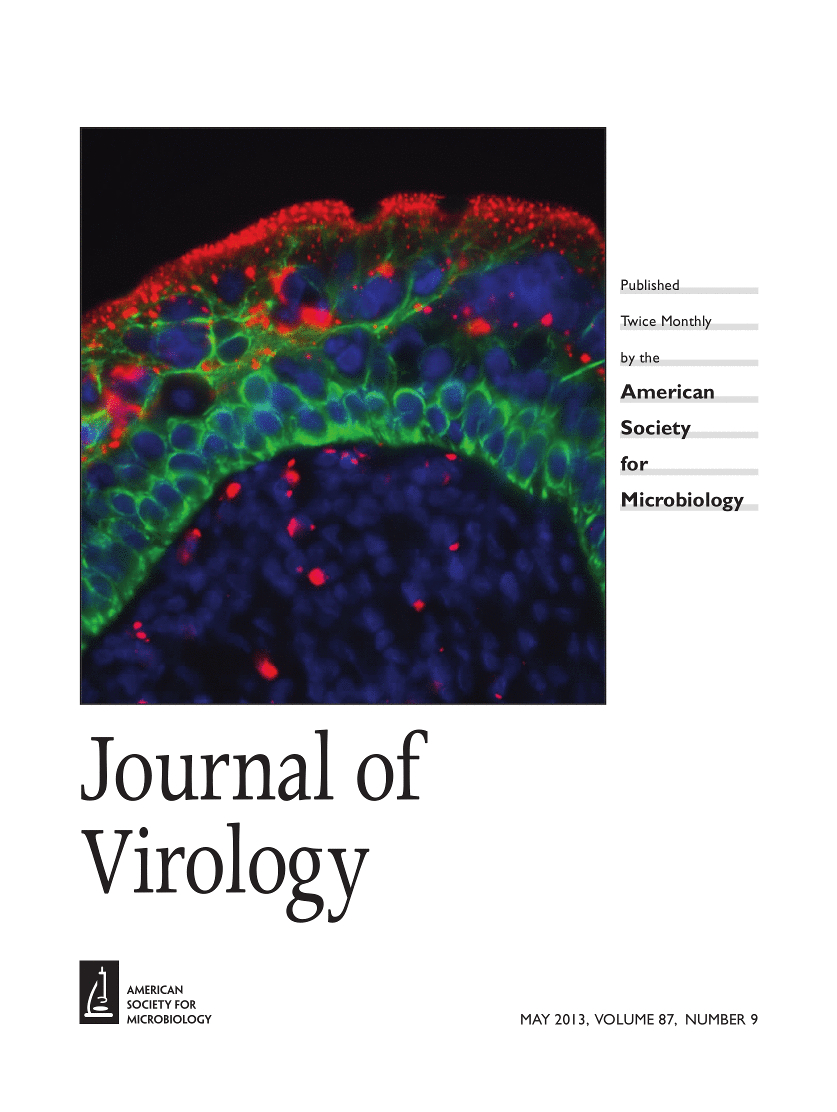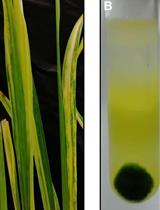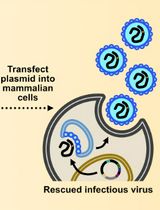- EN - English
- CN - 中文
Measuring Genetic Robustness in Vesicular Stomatitis Virus
测定水泡性口炎病毒中的基因强性
发布: 2014年03月20日第4卷第6期 DOI: 10.21769/BioProtoc.1073 浏览次数: 9286
评审: Anonymous reviewer(s)
Abstract
Genetic robustness is the ability of a genome to incorporate mutations with the result of no fitness changes. Thus, more robust viruses have an increased neutral mutation rate. This property is particularly important in RNA viruses due to their high mutation rates. The most direct way of measuring robustness in vesicular stomatitis virus (VSV) is to carry out clonal analysis of populations: randomly isolating individual VSV strains (plaques), measuring the fitness of each one and generating fitness distributions (Novella et al., 2010). A second possibility is to carry out multiple replicates of repeated plaque-to-plaque passages, determining fitness in progeny populations and generating fitness distributions (Novella et al., 2010). Depending on the expected differences, the former may require hundreds of determinations, while the latter may require tens of determinations. A third approach consists of increasing the mutation rate of populations under analysis to magnify any differences that may exist and, instead of measuring fitness, measuring survival (Novella et al., 2013). One caveat of this method is that changes in survival can also be explained by changes in polymerase fidelity. For that reason, it is important to perform complementary experiments, in this case quantifying mutant frequency.
Materials and Reagents
- Test and reference VSV strains
Note : The former is the strain under investigation, the latter is the control (typically the progenitor).
- Baby hamster kidney cells (BHK-21)
- 10x Trypsin/EDTA (Life Technologies, Gibco®, catalog number: 15400 )
- I1 Monoclonal antibody (I1Mab) hybridoma (Holland et al., 1991) (ATCC, catalog number: CRL-2700 )
Note: This antibody recognizes the G glycoprotein of VSV.
- I14 Mab (Holland et al., 1991) (https://www.kerafast.com/p-172-hybridoma-ie9f9-i14.aspx)
Note: This antibody recognizes the G glycoprotein of VSV.
- Proteose peptone No. 3 (PP3) (BD DifcoTM, catalog number: 212230 ) (12 g/L in dH2O, autoclaved)
- Bovine Calf Serum (BCS) (Life Technologies, Gibco®, catalog number: 16170-078 )
Note: BCS is a good choice to carry out plaque assays and it is a lot cheaper than FBS.
- Fetal Bovine Serum (FBS) (Life Technologies, Gibco®, catalog number: 10437 )
- 10% CO2
- 5-Fluorouracyl (5-FU) (Sigma-Aldrich, catalog number: F-6627 ) (10 mg/ml in ethanol, filtered)
- Agarose (Lonza, SeqplaqueTM GTGTM, catalog number: 50111 ) (40 g/L in dH2O, autoclaved)
- 4.2% bicarbonate
- Penicillin/streptomycin mixture (Mediatech, Cellgro®, catalog number: 30-004-Cl )
- Saline solution (see Recipes)
- Minimal Essential Medium with Hank’s salts (MEM-H) (Mediatech, Cellgro®, catalog number: 50-019-PB ) (see Recipes)
- Crystal violet solution (see Recipes)
Equipment
- T25 plug-seal flasks (CytoOne®, catalog number: CC7682-4325)
- 5 ml and 25 ml pipetes
- Plugged Pasteur pipetes
- 1.5 ml tubes
- Type II biosafety hood
- 37 °C, CO2 cell culture incubator
- Transilluminator (optional)
Procedure
文章信息
版权信息
© 2014 The Authors; exclusive licensee Bio-protocol LLC.
如何引用
Novella, I. S. (2014). Measuring Genetic Robustness in Vesicular Stomatitis Virus. Bio-protocol 4(6): e1073. DOI: 10.21769/BioProtoc.1073.
分类
微生物学 > 微生物遗传学 > 诱/突变
分子生物学 > RNA > RNA 测序
微生物学 > 微生物细胞生物学 > 细胞分离和培养
您对这篇实验方法有问题吗?
在此处发布您的问题,我们将邀请本文作者来回答。同时,我们会将您的问题发布到Bio-protocol Exchange,以便寻求社区成员的帮助。
Share
Bluesky
X
Copy link














